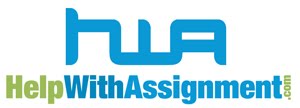The Pareto Chart: The Pareto chart can also be known as, the Pareto diagram. There can be two types of Pareto Charts such as, a weighted Pareto chart or a comparative Pareto Chart. A Pareto chart is a special bar graph, where the lengths are represented by frequency or cost, time or money that are arranged with the longest bars on the left and the shortest to the right side. Thus, a chart visually exhibits the relative importance of problems or conditions.
Here are the few steps involved in constructing a Pareto Chart:
· The problem to be analyzed is defined and to identify the different potential causes.
· Decide which criterion to use when comparing the possible causes such as, how often the different causes occur, their consequences or costs.
· Define the time interval during which data will be collected and carry out the data collection for the selected criterion.
· Place the causes from left to right on the horizontal axis of the chart, in descending relative importance. Rectangle lines are drawn to represent the heights.
· It is necessary to mark the data value on the left vertical axis and the percentage value on the right and a curve of cumulative is drawn along the top edges of the rectangles.
An illustration is given below to explain the use of a Pareto Chart:
This illustration explains how a Pareto Chart works. Many studios around the world make televisions commercials. One studio specialized in shooting ads starring cats. Lately, many factors took place for the delay of the commercial such as, lack of equipment, technical problems with audio and video, rework of scripts and misbehaving cats.
Causes of Cat distress Time lost due to the cause Total time lost due to the cause
Not been fed 4, 3, 5, 2, 5, 3 22
Not been cuddled 3, 3, 5, 3 14
Studio too cold 9, 2, 4, 6, 4, 5 30
Too much noise 20, 15, 35, 20, 9, 16 115
Smell of previous cat still present 41, 68, 39, 60, 29, 52, 19, 8 316
Surface to sit/lie on not appealing 2, 4, 1 7
The above given details can also be explained with a graphical example.
Time lost (Minutes) Cumulative % time lost
